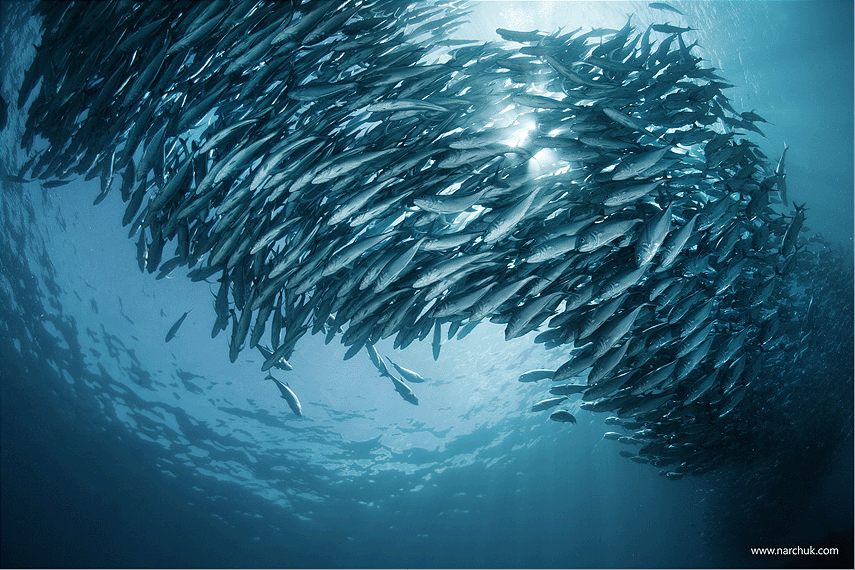in Biological and Related Systems
Lev Tsimring, BioCircuits Institute, University of California, San Diego, USA
Hugues Chate, Service de Physique de l'Etat Condense, CEN Saclay, France
Igor Aronson, Argonne National Laboratory, IL, USA
In the last 15 years, the collective motion of large numbers of self-propelled objects has become an increasingly active area of research. The examples of such collective motion abound: flocks of birds, schools of fish, swarms of insects, herds of animals etc. Swarming of living creatures is believed to be critical for the population survival under harsh conditions. The ability of motile microorganisms to communicate and coordinate their motion leads to the remarkably complex self-organized structures found in bacterial biofilms. Active intracellular transport of biological molecules within the cytoskeleton has a profound effect on the cell cycle, signaling and motility. In recent years, significant progress has also been achieved in the design of synthetic self-propelled particles. Their collective motion has many advantages for performing specific robotic tasks, such as collective cargo delivery or harvesting the mechanical energy of chaotic motion.

Figure. School of pike.
It is natural to classify the collective motion of active particles according to how the mechanical energy is supplied to them. One large class is represented by the particles driven by external forces, such as electromagnetic fields or hydrodynamic flows. In these situations the external fields exert forces or torques on individual particles. In the second case the motion of self-propelled particles is powered by internal energy sources, for example, via chemical reactions. Consequently, the particles are propelled by local force dipoles. Most of biological organisms as well as many synthetic self-propelled particles, such as bimetallic chemical microswimmers, asymmetric 'Janus' particles, belong to this class.
Collective motion and self-propulsion leads to new and non-trivial material properties of the 'active' medium. For example, bacteria swimming in a suspension lead to a dramatic reduction in viscosity, the enhancement of self-diffusivity, and even to the possibility of mechanical energy extraction from chaotic and seemingly Brownian motion of the microscopic organisms.
While a large number of theoretical and experimental papers have been published on various aspects of collective motion, the field still lacks conceptual clarity, especially in how the 'microscopic' interactions between individual particles affect macroscopic properties of collective motion. The most difficult issues arise due to the interplay between long-range interactions (e.g. hydrodynamic coupling between bacteria, or 'social' interactions between the birds) and short-range interactions, such as particle collisions or lubrication interactions. Other poorly understood issues are the multi-particle effects present in the dense swarms, statistical properties of the collective state, and the effects of the intrinsic noise in cases of highly nonlinear interactions between the particles.
Since systems of self-propelled particles are out of thermal equilibrium, the powerful and general machinery of thermodynamics and statistical physics, e.g. various techniques based on minimization of energy or maximization of entropy, cannot be directly applied in the majority of cases. Thus, brute-force discrete particle simulations with stochastic forces due to thermal fluctuations remain the most popular research tools. Even with the dramatic increase of computational power, the usefulness of direct numerical simulations remains limited to cases of short-range, usually pair-wise, interactions of particles. The long-range forces such as hydrodynamic interactions, are usually included only on a highly simplified level, mostly via viscous friction acting on the particle or in the mean-field approximation.
Continuum coarse-grained models, derived for macroscopic field variables (concentration, velocity, polarization, nematic tensor etc), are more computationally effective than direct particle simulations, and allow one to study bigger systems on longer time scales. But a systematic derivation of the coarse-grained equations describing out-of-equilibrium systems is usually a formidable challenge and most of these models are postulated on phenomenological grounds.
There has been a rapidly growing number of computational and theoretical works on the generic dynamic and statistical properties of collective behavior exhibited by self-propelled particles with simplified interactions, from point-like particles to rigid self-propelled rods. A variety of dynamic phases were predicted, from moving clusters, bands, to swarming states. However, to date, the connection between these simulations and experimentally observed dynamics of self-propelled particles remains unsatisfactory. Future computational models will likely incorporate, on a more realistic level, the specific properties of self-propelled particles and a variety of inter-particles forces, from electric, magnetic, to steric and hydrodynamic.
In this focus issue we have tried to assemble papers from leading experts which we hope will provide a current snapshot of this young and rapidly expanding field of research. They cover both theoretical and experimental investigations of the dynamics of active matter on different spatial and temporal scales.
The articles listed below are the first accepted contributions to the collection and further additions will appear on an ongoing basis.
参见网址:
http://iopscience.iop.org/1367-2630/focus/Focus%20on%20Swarming%20in%20Biological%20and%20Related%20Systems





